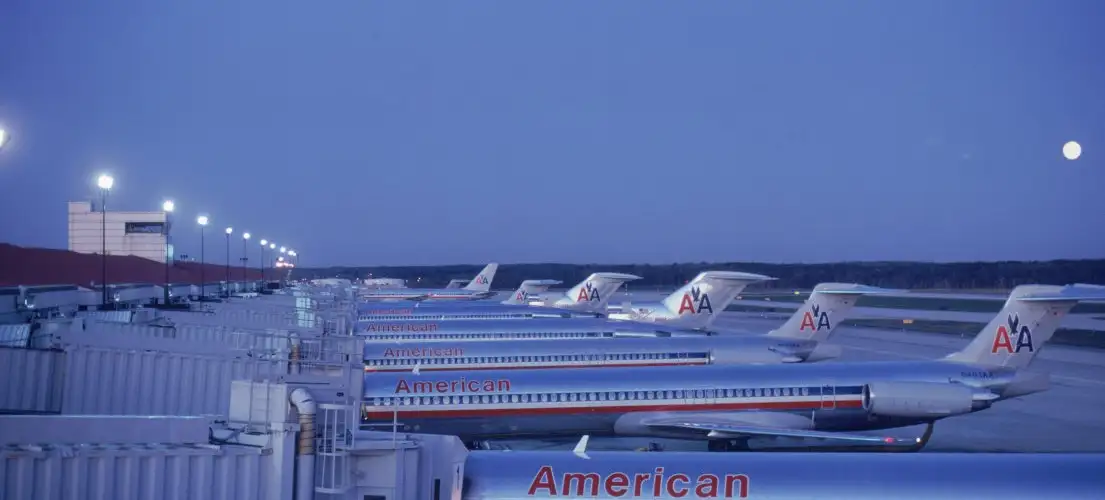
In a surprise move, the Department of Justice today filed a lawsuit challenging the proposed merger between American and US Airways on antitrust grounds. Joining the DOJ in the suit are the attorneys general of Texas, Arizona, Florida, Washington, D.C., Pennsylvania, Tennessee, and Virginia. (The case is U.S. v. US Airways Group Inc., 13-cv-01236, U.S. District Court, District of Columbia.)
Summing up its objections, the department’s news release quotes Attorney General Eric Holder as follows:
Airline travel is vital to millions of American consumers who fly regularly for either business or pleasure. By challenging this merger, the Department of Justice is saying that the American people deserve better. This transaction would result in consumers paying the price—in higher airfares, higher fees and fewer choices. Today’s action proves our determination to fight for the best interests of consumers by ensuring robust competition in the marketplace.
Earlier this month, the merger plan had been approved by American’s creditors and by European Union regulators. It was widely assumed that the Justice department would sign off on the deal as well, followed by approval by the bankruptcy court. Most industry observers, including this writer, expected the merger to take effect before the end of September.
Although the DOJ in recent years allowed the Delta-Northwest and United-Continental mergers to proceed, in the face of strong opposition from consumer advocates, in this case the department has sided with those who warned that consolidation would be anti-competitive. According to the filing, the merger “will leave three very similar legacy airlines — Delta, United and the new American—that past experience shows increasingly prefer tacit coordination over full-throated competition… By further reducing the number of legacy airlines and aligning the economic incentives of those that remain, the merger of US Airways and American would make it easier for the remaining airlines to cooperate, rather than compete, on price and service.”
In short, the DOJ has come down on the side of the argument I’ve made here many times, that American and US Airways are perfectly capable of competing as stand-alone companies. And it’s in the best interest of the traveling public that they continue doing so.
Consumers may not win in the end, but today they’ve been given a reprieve.
Merger Cheat Sheet
- The new company will retain the “American Airlines” name and be based at American’s Ft. Worth headquarters.
- US Airways chief Doug Parker will be the new CEO. American chief Tom Horton will be named chairman of the new board and remain in that position until the spring of 2014 when the company’s first annual shareholder meeting will be held. When Horton departs the board, Parker will assume his position as chairman.
- American’s creditors would own around 72 percent of the new company; US Airways shareholders would get the rest.
- Based on 2012 results, the new company would have generated $38.7 billion in revenue.
- The merger is expected to generate around $1 billion in combined extra revenue and cost savings for the new company.
- The new company will be valued at around $11 billion.
- Combining the third- and fifth-largest U.S. carriers will create the world’s largest airline, in terms of passenger traffic.
- Prior to any post-merger rationalization, the two airlines will have around 94,000 employees, 950 planes, 6,500 daily flights, and eight major hubs (American: Dallas, Miami, Chicago, Los Angeles, New York; US Airways: Phoenix, Philadelphia, Charlotte). Although the carriers promise to maintain all current hubs, Phoenix and Philadelphia are likely to be downsized in the post-merger “rationalization.”
- The new American will be a member of the oneworld alliance, not the Star Alliance.
- The merger is subject to review and approval by U.S. regulators. That wasn’t expected to be a problem since there is relatively little overlap between the two airlines’ networks.
- The actual merger won’t happen overnight. United and Delta required five and seven months respectively to secure the necessary approvals for their mergers.
- It was 22 months after their merger closed before United and Continental finally merged their frequent flyer programs. Expect a similar post-close interval before American and US Airways consolidate their programs.
- Comparisons between American and US Airways’ current mileage programs are probably moot since there’s a high likelihood that an entirely new revenue-based program (like Southwest’s) will be introduced to replace both programs.
- After the merger, 83 percent of U.S. domestic air traffic will be in the hands of just four airlines (American 26 percent, United 19.3 percent, Delta 19.2 percent, Southwest 17.3 percent).
Reader Reality Check
Do you support the Justice Department’s move?
This article originally appeared on FrequentFlier.com.
We hand-pick everything we recommend and select items through testing and reviews. Some products are sent to us free of charge with no incentive to offer a favorable review. We offer our unbiased opinions and do not accept compensation to review products. All items are in stock and prices are accurate at the time of publication. If you buy something through our links, we may earn a commission.
Related
Top Fares From Columbus, OH
Today's Top Travel Deals
Brought to you by ShermansTravel
Shop and Save with Country Inns...
Patricia Magaña
 Hotel & Lodging Deals
Hotel & Lodging Deals
$229 -- Chicago: Discounted Rates and...
Francesca Miele
 Hotel & Lodging Deals
$229+
Hotel & Lodging Deals
$229+
$188 -- Honolulu: Save on Oceanview...
Abigail Lamay
 Hotel & Lodging Deals
$188+
Hotel & Lodging Deals
$188+



